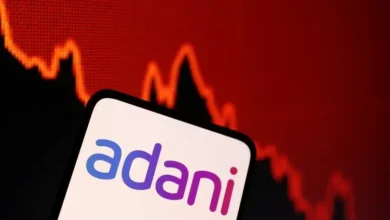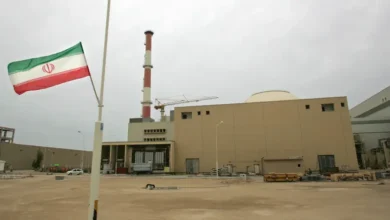Commodities in 2024: Balancing geopolitical tensions and market volatility

As geopolitical tensions continue to influence the global market, investors are increasingly turning their attention to the commodities sector in 2024.
This shift is primarily driven by the significant fluctuations in oil and gold prices throughout 2023, influenced by a mix of geopolitical factors, market sentiment regarding the Federal Reserve’s future interest rate decisions, and the classic dynamics of demand and supply.
Gold market outlook
The gold market is poised for an eventful year in 2024. Analysts and financial institutions are setting their sights high, predicting new record highs for gold prices. This optimism is fueled by the potential cuts in US interest rates and other global factors.
Notably, the ongoing war in the Middle East, political uncertainties stemming from forthcoming elections in major economies, and increased central bank purchases led by China are expected to enhance the appeal of gold as a safe-haven asset in the coming year.
Abdul Azim al-Amawi, a global markets expert, shared his insights with Al Arabiya Business, predicting a notable change in the gold market for 2024. He pointed out that traditionally, gold prices experience a 2-3 percent increase in January, attributed to annual portfolio adjustments. This trend is expected to persist, especially with the anticipated changes in US monetary policy.
Supporting this view, Saxo Bank foresees 2024 as a critical year for metals, with particular emphasis on gold, silver, and copper. The bank projects an increase in the prices of these commodities, especially those with limited supply, indicating a potentially dynamic year for the sector.

At its meeting last month, the US Federal Reserve had signaled the possibility of reducing the benchmark interest rate three times in 2024. The Federal Reserve committee’s ‘dot plot’ showed a decrease by three-quarters of a percentage point this year to a range of 4.5 percent to 4.75 percent. The reserve’s benchmark short-term rate is currently at a 22-year high.
Wells Fargo, setting a year-end target for 2024, estimates that gold prices could range between $2100 and $2200 per ounce. They express confidence in gold’s continued positive price momentum through 2024.
J.P. Morgan also holds a bullish view as well, forecasting “a breakout rally” for gold in mid-2024, with a targeted peak of $2,300, contingent on anticipated rate cuts.
Gold prices have recorded their best annual performance in three years. The prospect of lower interest rates plays a significant role in this trend, as it reduces the opportunity cost of holding non-yielding bullion, making gold an increasingly attractive investment.
Oil market outlook
The oil market was full of uncertainty during 2023, marred by concerns about a potential global recession and ambiguity regarding China’s economic recovery – the world’s second-largest economy. Adding to these complexities were ongoing geopolitical tensions, including the Russian-Ukrainian conflict, the Gaza war, and security issues in the Red Sea.
Furthermore, the increased oil supply from non-OPEC+ countries contributed to this uncertain landscape.
Reflecting these challenges, most research entities have adopted a cautious stance in their forecasts for oil prices in 2024, presenting more conservative estimates compared to the average predictions made for 2023 a year earlier.
Looking ahead at 2024, the US Energy Information Administration forecasts an average price of $84 per barrel for Brent crude in the first half of the year, with an annual average of $83. This is a downward revision from their previous estimate of $93 for the current year. Barclays Bank has also revised its Brent price forecast downward to $93, a $4 decrease from its earlier prediction.
ING Bank projects Brent prices to hover around $80 in the first half of 2024, improving to $91 in the later half as the market shifts towards a supply deficit.
In contrast, J.P. Morgan holds a more pessimistic view, expecting an average Brent price of $83 per barrel for 2024.
Both oil contracts, Brent and WTI, lost more than 10 percent of their value on an annual basis in 2023, which led to concerns about oil production levels among major producers around the world. Both contracts ended the year at their lowest levels since 2020.
It’s important to note how OPEC+ was instrumental in stabilizing the market by providing about 40 percent of the global oil supply.
Key actions by OPEC+ in 2023 included the coalition’s announcement in April 2023 of reducing output by 1.65 million barrels per day, in addition to a cut of two million barrels per day approved in October 2022.
These reductions effectively removed approximately 3.6 million barrels per day from the market, which is equal to 3 percent of the global demand.
Saudi Arabia played a pivotal role by announcing a voluntary cut of one million barrels per day starting July 1, leading to voluntary reductions among OPEC+ members, with Russia following suit with its export reductions.
Saudi Arabia’s commitment to market stability was evident as it extended its voluntary cuts several times, most recently until March 2024.
Despite these cuts, production from countries outside OPEC+ has led to a surplus in the market, particularly with the US reaching near-record production levels of 13.3 million barrels per day in 2023. Increased outputs from Iran, Libya, and several African countries also contributed to this surplus.
S&P Global anticipates a continuation of this supply surplus, primarily due to the robust production from non-OPEC+ countries.











